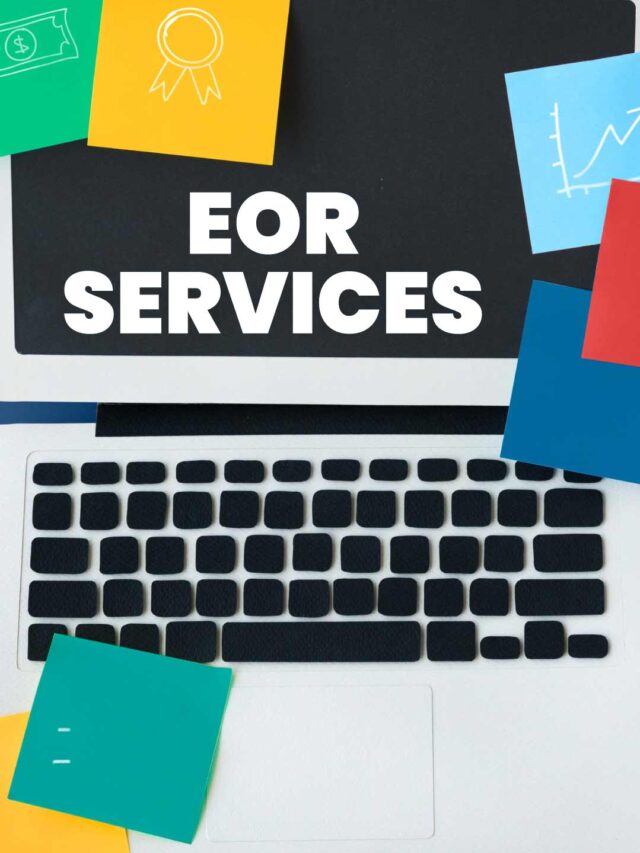Salary structure of a Private Limited Company in India. Deduction, Benefits, CTC
Introduction
A Company must establish a well defined salary structure to comply with labor laws and tax regulations, streamline payroll processing, and enhance employee satisfaction. This structure ultimately strengthens the company’s overall performance. Let’s explore the salary structure in a Pvt Ltd Company in depth through the blog below.
Importance of Salary Structure for a Company
A well structured salary framework is crucial for a company as it ensures financial stability, compliance, and employee satisfaction. A properly defined salary structure not only helps in cost management but also plays a significant role in talent acquisition and retention. Below are some key reasons why companies must follow a structured salary system:
1. Compliance with Legal and Tax Regulations
A structured salary system ensures that a company adheres to government-mandated labor laws, tax regulations, and statutory contributions such as Provident Fund (PF), Employee State Insurance (ESI), and Professional Tax. Non-compliance can lead to legal penalties, financial losses, and reputational damage. Following a proper salary structure ensures that the company remains legally compliant, avoids disputes with tax authorities, and builds credibility among investors and stakeholders.
2. Fair and Transparent Compensation System
A well defined salary structure promotes transparency in employee compensation and ensures fair salary distribution based on experience, skill set, and job role. When employers clearly explain how they structure salaries including basic pay, allowances, and deductions employees feel valued and motivated. This prevents dissatisfaction and conflicts regarding salary disparities, ultimately improving workplace harmony and productivity.
3. Attracting and Retaining Talent
Companies that offer a competitive and structured salary package are more likely to attract skilled professionals. A clear salary framework, which includes fixed pay, performance-based incentives, and long-term benefits like gratuity and retirement contributions, enhances job security and financial stability for employees. This structured approach not only helps in retaining existing employees but also reduces hiring costs by minimizing high attrition rates.
4. Optimized Financial Planning and Payroll Management
A well-planned salary structure enables companies to manage their payroll expenses efficiently. By clearly defining fixed and variable components, A Pvt Ltd Company can forecast labor costs accurately and allocate resources effectively. It also helps in budgeting for salary increments, bonuses, and incentives without affecting the company’s overall financial health.
By implementing a robust salary structure, companies can achieve long-term financial stability, legal compliance, and employee satisfaction, all of which contribute to overall business growth and sustainability.
Components of Salary Structure in Pvt Ltd Company
Salary of an employee is divided into different components; each component has a specific purpose.
1. Allowances
A salary structure in a Pvt Ltd Company consists various allowances that impact an employee’s salary. Let’s take a closer look at these allowances in a Pvt Ltd Company.
2. Basic salary
The basic salary is the fixed part of an employee’s earnings and forms the core of their total salary (CTC). It usually makes up 40-50% of the total salary.
- This amount is fully taxable based on the employee’s income tax slab.
- Key benefits like Provident Fund (PF) and Gratuity are calculated based on the basic salary.
- Since it does not include extra allowances or perks, having a higher basic salary means paying more tax but also receiving better retirement benefits.
3. Dearness Allowance(DA)
Dearness Allowance (DA) helps employees cope with rising costs due to inflation. Most government and public sector jobs offer DA, though some private companies also provide it. Employers usually calculate DA as a percentage of the basic salary and revise it from time to time. It is fully taxable and affects the calculation of benefits like Provident Fund and Gratuity.
4. House Rent Allowance (HRA)
HRA is given to employees to help with house rent expenses. It provides tax benefits under Section 10(13A) of the Income Tax Act, but only if the employee actually lives in a rented house. The tax exemption depends on factors like salary, rent paid, and city of residence. However, if an employee owns a house and does not pay rent, the entire HRA is taxable.
5. Conveyance Allowance
This allowance helps employees cover daily travel costs between home and work. Earlier, employees could get a tax exemption of approx ₹1,600 per month, but under the new tax system, it is fully taxable. Instead of a fixed allowance, some companies may reimburse actual travel expenses.
6. Medical Allowance
Companies give a fixed medical allowance to help employees cover medical expenses. Under the new tax system, this allowance is fully taxable. Earlier, employees could claim a tax exemption of up to ₹15,000 per year by submitting medical bills, but the government has removed this benefit.
7. Leave Travel Allowance
Companies provide LTA to cover travel expenses when an employee travels with their family. It remains tax-free only if the travel occurs within India and the employee incurs actual expenses. Employees can claim this exemption twice within a block of four years. However, the exemption does not cover costs for food, hotel stays, or local transport.
Deduction
1. Provident Fund (PF) Contributions
Provident Fund is a retirement savings scheme where both the employee and employer contribute 12% of the basic salary. The employer’s contribution is a part of CTC but does not affect take-home pay. The PF balance earns interest and can be withdrawn after retirement or under specific conditions.
2. Professional Tax.
States impose a professional tax, which employers deduct from an employee’s salary. The amount varies by state, but the maximum deduction is ₹2,500 per year. Employers deduct it monthly, and employees can claim it as a tax deduction under Section 16(iii).
Benefits
1. Gratuity
Gratuity is a lump sum payment given to employees for long-term service. To be eligible, an employee must complete at least five years in the company. It is calculated using the below formula:
- Gratuity = (Basic Salary + DA) × 15/26 × Number of Years Worked.
Under the Income Tax Act, Gratuity is tax-free up to ₹20 Lakh in a lifetime.
2. Bonus and Incentives
Bonus and incentives are extra payments given to employees as a reward for their performance. They are usually paid quarterly or annually and are fully taxable. Some companies offer retention bonuses to encourage employees to stay for a certain period.
Consequences of Not Following Government Salary Rules
If a Private Limited Company does not follow the salary structure set by the government, it can face several consequences. Here’s what can happen:
1. Legal Trouble and Fines
- If the company does not pay at least the minimum wage set by the government, it can be fined.
- Not paying salaries on time or making wrongful deductions can lead to legal action under wage laws.
- The company may even have to pay a penalty or, in serious cases, face imprisonment.
2. Tax and Compliance Issues
- If the company does not deduct or deposit TDS (Tax Deducted at Source) properly, it may have to pay extra interest and fines.
- Not contributing to Provident Fund (PF) and Employees’ State Insurance (ESI) can lead to financial penalties and legal complications.
3. Employee Complaints and Legal Cases
- Employees can file complaints with the Labor Department if they are not paid correctly.
- Unfair salary practices may lead to legal cases, which can be costly and time-consuming for the company.
4. Problems with Investors and Authorities
- During audits, authorities may find non-compliance, which can create trouble for the company.
- Investors and banks prefer to work with companies that follow the law, so ignoring salary rules may affect funding opportunities.
Damage to the Company’s Reputation
- Employees may leave due to unfair salary policies, leading to higher attrition rates.
- The company may develop a bad reputation in the industry, making it harder to attract skilled employees and business partners.
Salary structure format for Pvt Ltd Company.
Lets consider the annual CTC of an employee is 5,00,000. For this salary, structure would look like below;
| Salary Component |
Annual Amount (₹) |
| Basic Salary (40-50% of CTC) |
3,00,000 |
| House Rent Allowance (HRA) |
90,000 |
| Conveyance Allowance |
40,000 |
| Other Allowance |
34,600 |
| Provident Fund (12% of Basic Salary) |
36,000 |
| Professional Tax |
2,400 |
That means an employee has to pay an income tax of ₹ 20,000 in the old tax regime.
What is CTC, Gross Salary, and Net Salary?
- CTC: Cost-to-Company, is the salary package which company provides to its employees. It includes several components like PF contribution, gratuity provision, any insurance, or other benefits.
- Gross Salary: This is the total income an employee earns before deducting statutory and non-statutory charges. It also accounts for any salary reduction due to unpaid leave.
- Net Salary: Net salary is the amount that the employee gets in hand. It is called ‘In-Hand’ Salary.
Conclusion
A well defined salary structure in Pvt Ltd Company ensures financial clarity, tax efficiency, and employee satisfaction. By including components like basic salary, allowances, PF, and gratuity, companies can balance employee benefits with compliance requirements. Understanding these components helps employees make informed financial decisions. A structured approach to salaries not only enhances transparency but also makes the salary structure of Pvt Ltd Company more competitive and attractive for talent retention.
Suggested Read :
ROC Compliance Form For Pvt Ltd Company
Statutory Audit For Pvt Ltd Company
Enterprises vs Pvt Ltd Companies
Taxs & Compliances for Pvt Ltd Company
Advantages and disadvantages of Pvt Ltd Company
FAQ
1. What is included in the salary structure of a Pvt Ltd Company?
The salary structure includes components like basic salary, allowances, deductions, and benefits.
2. How is the basic salary determined in a Pvt Ltd Company?
Basic salary is usually 40-50% of the total CTC and serves as the base for calculating other benefits like PF and Gratuity.
3. What is the difference between CTC, gross salary, and salary?
CTC is the total package offered by employer and gross salary is the salary before deduction like PF and tax. Meanwhile, Net salary is the final amount after all deductions.
4. Is House Rent Allowance (HRA) fully tax free?
No, HRA is tax-exempt only if the employee lives in a rented house and meets the conditions under Section 10(13A) of the Income Tax Act.
5. How does PF impact an employee's salary?
Both the employer and the employee contribute 12% of the basic salary to PF. while it reduces the in-hand salary. moreover, It provides long-term savings and retirement benefits with tax free interest.











November 14, 2025 By Dhruvi
Private Limited Company Incorporation in India with Ebizfiling At Ebizfiling, we simplify the process of Private Limited Company incorporation in India for aspiring entrepreneurs and small business owners. When you’re starting a new venture, our team ensures your registration is […]
July 23, 2025 By Dhruvi
Post Incorporation Compliances immediately After Pvt Ltd Registration: Critical Steps Most Startups Skip Introduction Getting your Pvt Ltd company registered is a big milestone; but it’s only the beginning. The real work starts after incorporation. This pvt ltd post incorporation […]
June 19, 2025 By Team Ebizfiling
How to Avoid International Tax for Indian Startups? Introduction Expanding across borders brings new customers, but also new tax challenges. Many Indian startups overlook hidden tax rules in foreign markets. Understanding international tax traps Indian startups must avoid can save […]